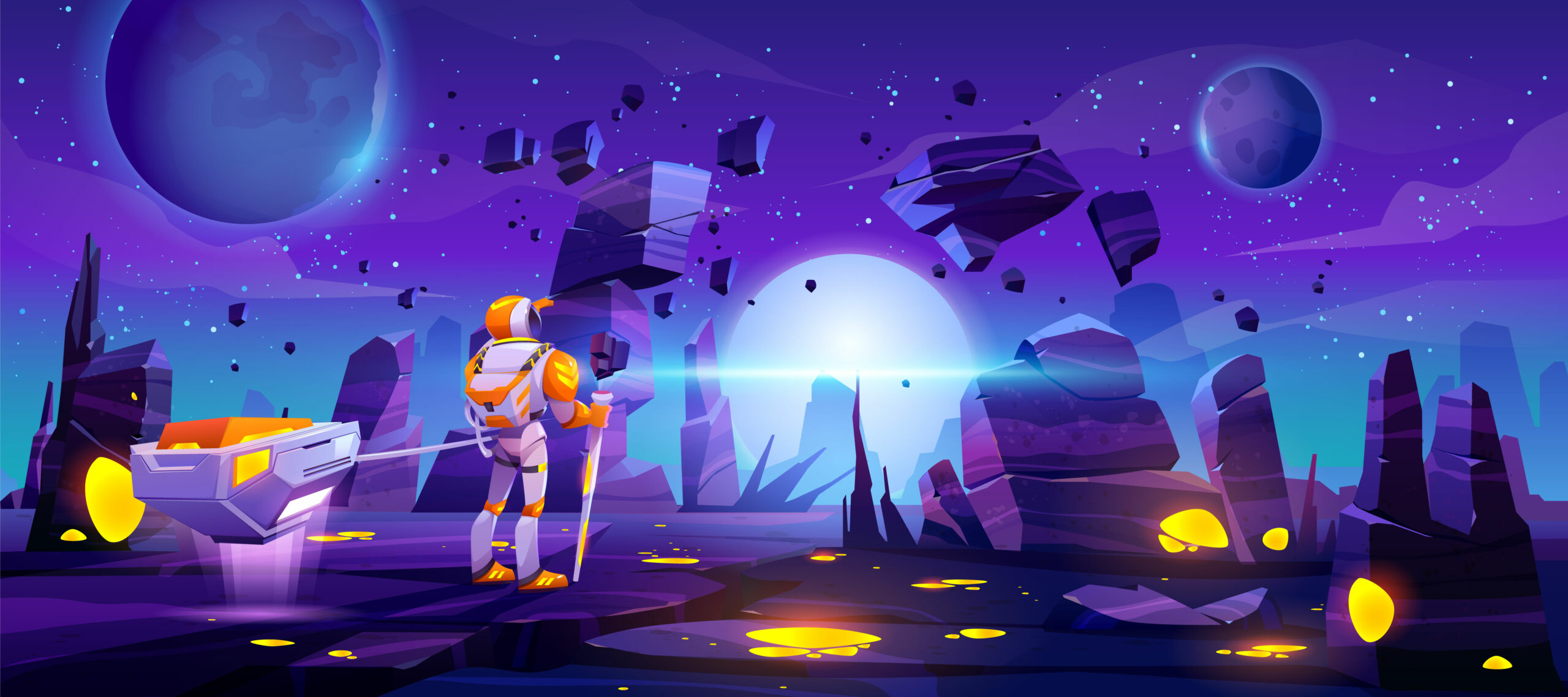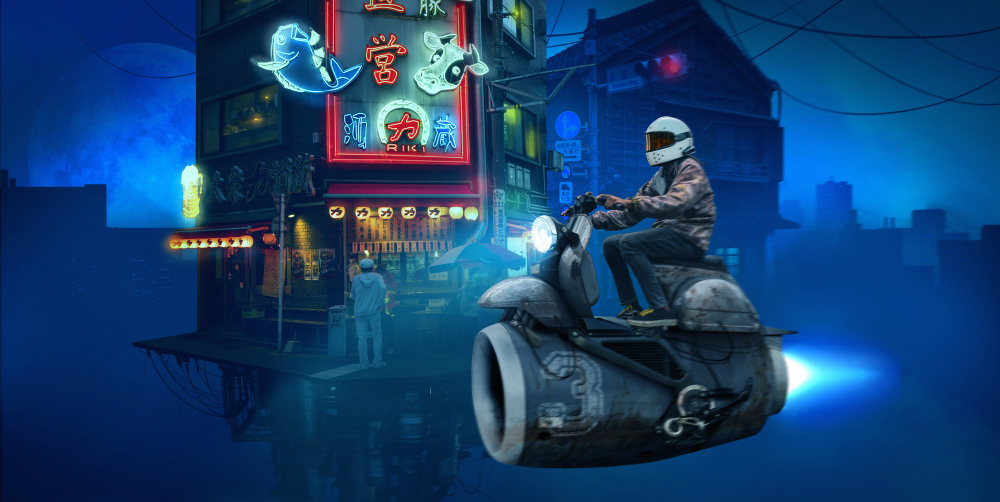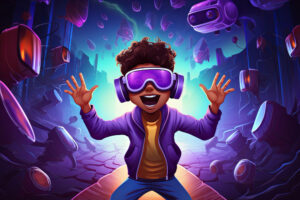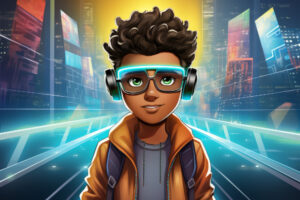Without the use of 3D assets, it is practically difficult to imagine an engaging game experience. Consider playing a video game in which there are no visually appealing people, rich locations, or engaging objects.
The importance of 3D assets in game production extends far beyond aesthetics; they serve as the foundation for interaction and storytelling. 3D assets are the essence of the gaming experience, from lifelike character movements to realistic game landscapes and intricate in-game objects. They are the tools by which players connect with the game, allowing for deep engagement and immersion.
In this blog, we will discuss the importance of premium 3D assets in game development. We will look at the game-enhancing powers of licensed 3D models as well as the exciting creative possibilities provided by celebrity models.
1. Types of 3D Assets for Game Development
Immerse yourself in the realm of game design with a wide range of 3D assets that cover everything from licensed models to celebrity creations, allowing game developers to explore unlimited creative possibilities.
Exploring a Diverse Selection of Game Assets
Character Customization Using 3D Clothing
Character customization has become a standard feature in modern video games. Players enjoy the ability to customize their in-game avatars, and 3D clothing plays an important role in this regard. These items enable players to clothe their avatars in a variety of styles, ranging from medieval knights to futuristic warriors. 3D clothing assets provide for a level of customization that not only improves the aesthetic attractiveness of characters but also allows players to express their own personal tastes and preferences.
3D Weapons to Increase Excitement
Weapons are crucial weapons in many gaming genres, acting as both adventure and conflict instruments. 3D weapons, whether a legendary sword, a futuristic laser gun, or a magical staff, bring the thrill of battle to life.
3D weapons offer a new level of excitement to the gameplay, making battles more exciting and memorable. The visual impact of well-designed weapons leaves a lasting impression on gamers, improving their overall gaming experience.
Low Poly vs. High Poly Models: Benefits and Drawbacks
In the world of 3D modeling, a crucial decision has to be made: low poly or high poly models?
Low poly models are performance-optimized, making them perfect for mobile platforms, virtual reality experiences, and other applications where efficiency is critical. These models are distinguished by their reduced polygon count, which allows for faster rendering times and more efficient use of hardware resources.
Low poly models are ideal for games that must run smoothly on a variety of systems, including low-end PCs and mobile devices. Because of their simple geometry, the game can maintain a high level of performance while still presenting visually appealing content.
In contrast, high poly models value complex detail and realism over performance. The high polygon count of these assets allows for the addition of tiny details and complex textures. High poly models require more processing power, yet they are necessary for generating aesthetically stunning and immersive experiences.
High poly models shine in situations where realism and visual quality are crucial. They often play a role in the creation of realistic humans, detailed 3D environment, and complicated 3D objects. These assets shine on high-end gaming platforms and help to produce magnificent images that leave players speechless.

3D Wearables for Character creation
While 3D assets dominate game production, 3D wearables emerge as an important component for character customisation. These intricately designed 3D outfits add to the visual richness of a game. These wearables, which are especially prevalent in 3D character-driven games, allow players to customize their avatars with a variety of styles, boosting the immersive gaming experience.
3D wearables provide creators with a blank canvas on which to experiment with various fashion designs and incorporate new visual aspects into their games. The use of 3D wearables in game creation underscores the growing relevance of delicate features in character design, giving players a way to express their individuality within the virtual realms.
Using Blender Models in Game Development
The Benefits of Using Blender 3D Models
Blender, a sophisticated open-source 3D modeling software, has quickly become a must-have for game makers. Because of its versatility and robust features, it is an invaluable instrument for developing 3D products.
Blender gives game developers tools for everything from character modeling to environmental design. Because it is open-source, it is also accessible to a wide spectrum of developers, independent of budget or expertise level.
Human 3D Models for Lifelike Characters
For game creators looking to immerse players, creating lifelike characters is a primary goal. Human 3D models, with their realistic proportions and expressions, are the foundation of realistic in-game characters. Character-driven storytelling in games relies on human 3D models. These models play an important part in moulding, expressing emotions, engaging players, and breathing life into virtual actors, whether it’s the hero’s journey, the subtleties of a villain, or the relatability of a supporting character.
Creating Low Poly Trees, Houses and Characters
The capabilities of Blender go beyond character modeling. It tends to be good at creating environmental components such as low poly trees and houses. These assets are essential for creating immersive gaming worlds, since they lend depth and authenticity to each environment.
Low poly environmental assets are not only visually beautiful, but also necessary for best performance. They create a balance between beauty and efficiency, allowing players to smoothly explore game settings even on less capable devices.
The Potential of 3D Character Models
Blender Character Modeling’s Role in Game Design
Game characters get a lot of attention since they serve as gamers’ avatar and tour guides through virtual worlds. Blender character modeling is a specialist skill that involves creating 3D models of characters ranging from heroes to antagonists.
Blender character modeling enables for the expression of personalities, emotions, and backstories, giving the gaming experience depth and distinctive characters. To develop interesting and receptive heroes, character-driven games frequently rely on the expert usage of Blender models.
2. Celebrity Models as 3D assets for a Distinctive Touch
In gaming, introducing familiar faces can be a game-changer. Including famous celebrities in your game offers an extra element of curiosity, bringing in fans of the featured celebrities and creating attention for your game. It’s an effective way to capitalise on the popularity of well-known people while giving players a special and unforgettable experience. Character models that closely resemble well-known celebrities are sculpted as part of the procedure, giving conventional character design an intriguing spin.

Imagine battling alongside your favourite movie celebrity or exploring a virtual environment with an avatar modelled after a famous musician. Celebrity models enhance the gaming experience by adding a sense of familiarity and authenticity, making players feel more connected to the virtual environment. This tendency exemplifies the fluid nature of game creation, where creative possibilities are always developing.
Character Diversity for Better Gameplay
Character design diversity is critical for establishing inclusivity and relatability in games. Players of any ethnicity, gender, or background should be able to see themselves mirrored in the virtual environment. Character modelling in Blender helps game creators to create a diversified cast of characters that appeal to a wide audience.
Character diversity not only improves the gaming experience, but it also lets creators to explore other viewpoints, cultures, and tales, resulting in a more inclusive and interesting gaming environment.
Role of Licensed 3D Models in Enhancing Game Quality
Creating 3D assets from scratch can be a time-consuming process. This is where licenced 3D models come in, providing a shortcut to high-quality assets that can greatly improve a game’s quality. Licenced models are pre-made assets that allow game developers maintain a high level of visual brilliance in their games.
These licenced models include a wide range of subjects, including characters, assets, and complete environments. Developers can save the considerable modelling and texturing labour required to create objects from scratch by getting licences for these assets.
3. Selecting the right 3D Assets
Several crucial elements should drive your decision-making process when it comes to selecting the correct 3D assets for your game development project.
Considerations while choosing 3D assets
Theme and genre of the game
The genre and theme of your game should serve as a guidepost for selecting 3D assets. A horror game, for example, may require creepy, complex backgrounds, whilst a fun mobile game may thrive on simpler, colourful characters and things. Consider how the 3D models will fit into the story and environment you want to create.
Performance optimisation using low poly models
In the age of varied gaming platforms, from high-end PCs to mobile devices and VR headsets, performance optimisation is critical. Low poly models are a crucial resource for ensuring smooth gameplay across multiple platforms.
Using low poly models allows your game to operate smoothly even on devices with limited processing power. When picking 3D assets, consider their polygon count and whether they correspond with your performance optimisation requirements.
Matching the style of your game
Every game has its own visual style; your 3D assets should blend well with this aesthetic. Whether your game is comical, cel-shaded, or aspires for harsh, hyper-realistic realism, the assets should reflect the visual brand you’re developing. Take the time to assess how well the chosen 3D assets match the established aesthetic of your game.

Including 3D Assets in Your Game
After you’ve chosen the right 3D assets for your game, the next critical step is to integrate them seamlessly.
Techniques for importing and customising assets
Understanding how to import, customise, and modify assets in Blender is a must for game producers.
Begin by uploading the 3D assets into Blender. After importing the assets, you can change them using Blender’s powerful collection of tools. This may include altering texturing, scaling, or making other changes to ensure the assets are consistent with your aesthetic goal.
Ensure compatibility with your game engine
Make sure the 3D assets you created in Blender are compatible with your game engine. This entails exporting the assets in the proper file format and understanding the import parameters of the engine. Compatibility guarantees a seamless transfer from Blender to your game development environment.
Improving asset performance
Lowering the poly count for more fluid gameplay
High polygon counts in 3D models can cause performance issues, particularly on lower-end hardware. To offer a smooth gameplay experience, assets are frequently optimised by employing low polygon counts without sacrificing visual quality.
Texturing and shading techniques
Learn how to apply textures and shading techniques within Blender to enhance the appearance of your 3D assets. This includes creating detailed textures, adding bump maps for surface imperfections, and optimizing shaders for the desired visual effects.
Rigging and animating character models
Character models must be rigged and animated before they can be used in your game. Rigging entails developing a skeleton system that allows characters to move realistically, whilst animation adds dynamic motion and expression.
Aesthetic fine-tuning
Using 3D clothing and wearables
Character customization is an important part of modern gaming, and 3D clothing and wearables play an important role in this. You can smoothly integrate these elements into your character models in Blender, allowing gamers to personalise their avatars. The addition of clothing and accoutrements deepens character customization, increasing player interest.

Adding realism through the use of 3D weapons and props
Weapons and props play an important role in gameplay dynamics, and their design should complement the overall aesthetics of your game. Blender allows you to develop or customise 3D weaponry and props to match the style and theme of your game.
4. Conclusion
In conclusion, the use of quality 3D assets is an effective driver in upgrading the landscape of game design. From the efficiency of low poly models to the exquisite realism provided by high poly counterparts, developers now have a wide arsenal at their disposal to create realistic gaming experiences. A visit to 3Daily is highly advised for individuals looking for professional 3D assets and licenced celebrity models to bring star power into their creations. It’s a meeting place for creativity and quality, with a trove of assets that may revolutionise game development adventures. Staying creative and embracing innovative ideas will surely define the future of game design, providing a steady stream of interesting and visually attractive gaming experiences as the industry grows.




